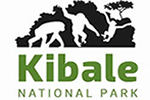Kibale National Park (795 km2) is located in western Uganda (0 13′ – 0 41′ N and 30 19′ – 30 32′ E) near the foothills of the Ruwenzori Mountains and contains moist evergreen forest. The park consists of mature, mid-altitude, moist semi-deciduous and evergreen forest (57%), grassland (15%), woodland (4%), lakes and wetlands (2%), colonizing forest (19%), and plantations of exotic trees (1%; primarily Cupressus lusitanica, Pinus patula, P. caribaea, and Eucalyptus spp.; Chapman and Lambert, 2000; the pine plantations are currently being removed and indigenous vegetation is being allowed to grow).
The forest is drained by two major everflowing rivers, Dura and Mpanga, both of which are tributaries of Lake George. These rivers are fed by numerous small forest streams, many of which are intermittent. Extensive valley swamps dominated by papyrus characterize both river systems.
One of the popular papyrus swamp is the Rwembaita Swamp, which is one of the larger papyrus swamps in the park (approximately 6.5 km in length) and feeds the Njuguta River, a tributary of the Mpanga River. Several small intermittent streams feed into the Rwembaita Swamp, and much of the system runs through an area that was selectively logged 30 years ago. In such valley swamps of the Kibale Forest, papyrus mats are generally not floating. During drier periods, open water is restricted to small pools and deeper channels. During the rainy periods, the papyrus swamp is transformed into a mosaic of interconnected channels, large pools, and inundated grassland areas.
Within Kibale as a whole, there is an elevational gradient from north to south, which corresponds to a north to south increase in temperature and decrease in rainfall (Howard, 1991; Struhsaker, 19970. Corresponding to these changes, the vegetation at these different sites varies Foresters have classified the forest at Sebatoli and Kanyawara as Parinari forest, distinguished on photo aspect maps by large spreading crowns of Parinari excelsa. The species associated with P. excelsa change between these two sites.
At Sebatoli the major sub-dominant is Carapa grandiflora. Near Kanyawara co-dominants included Aningeria altissima, Olea welwitschii, Newtonia buchananii, and Chrysophyllum gorungosanum. These assemblages are thought to represent climax forests between 1370 m and 1525 m (Osmaston, 1959). At Dura River these species are less common; Pterygota mildbraedii, Cola gigantea, Pipadeniastrum africanum, and Chrysophyllum albidum are the dominant tree species. Further south at Mainaro, the forest is dominated by Cynometra alexandri and it’s affiliated species. Detailed enumeration of the tree community of these areas is provided by Chapman et al. (1997) and Chapman et al. (in prep).
In the far south there are opportunities to study forest restoration. The clearing of land for agriculture has occurred primarily in the south of the park in an area known as the southern corridor, particularly in the Kibale Forest Corridor Game Reserve, which links Kibale with Queen Elizabeth National Park. This game reserve was managed by a separate government agency from the rest of the reserve and had an area of 340 km2, of which 134 km2 had dual status and lay within the Forest Reserve and Game Reserve.
As early as 1971, illegal destruction and encroachment occurred in the corridor. In 1976, some 30 eviction orders were issued, but were never carried out. In 1983, the government again ordered settlers out of these encroached areas, and by 1984, it was estimated that 60% of the forest plots and 30% of the grassland plots had been abandoned. However, the situation soon reverted to the prior state and encroachment increased. On April 1st, 1992, the government ordered settlers off the land, and with the aid of a United Nations Program resettled all encroachers.
